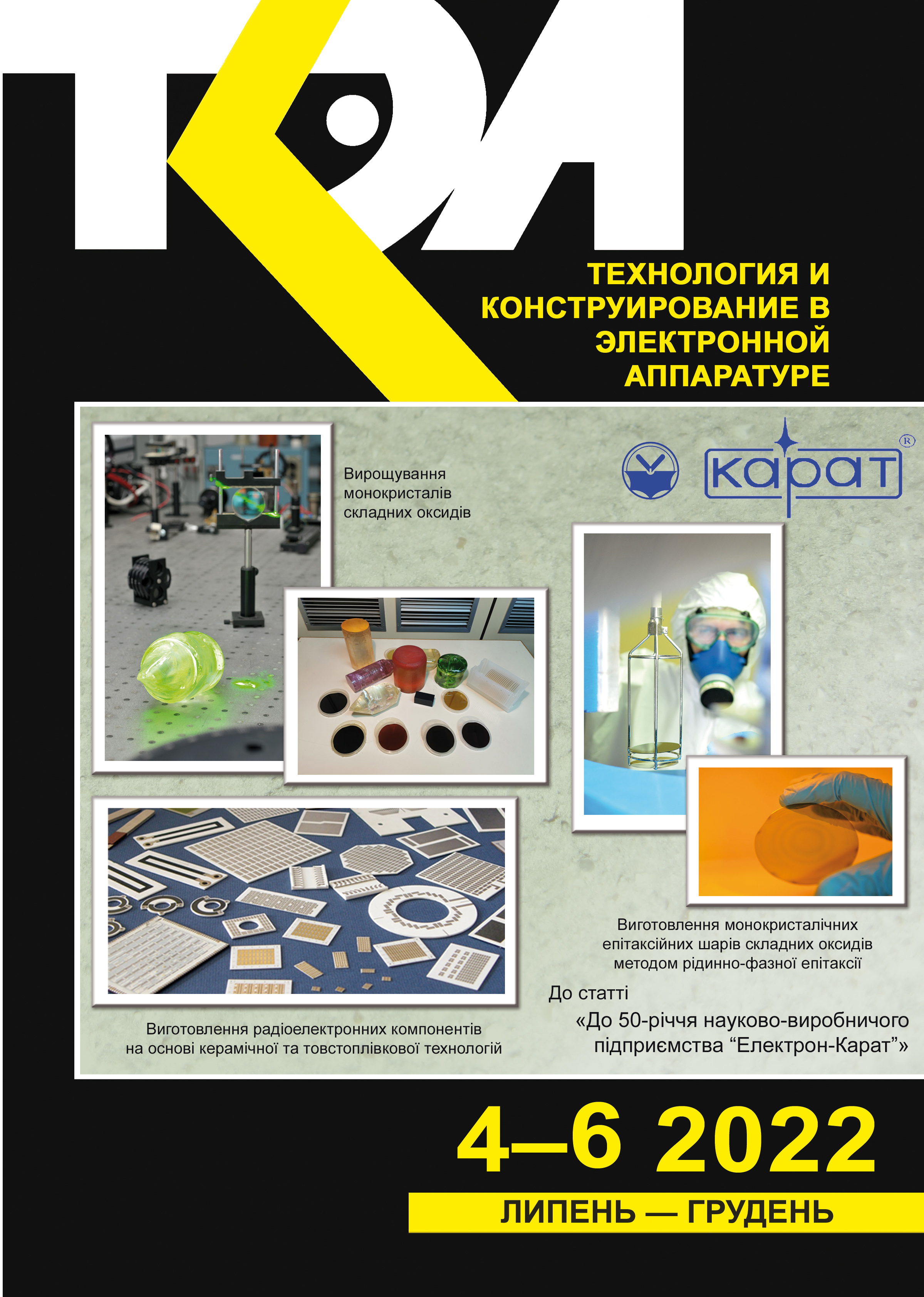Influence of electrolyte nature on electrochemical properties of carbon material of plant origin
Abstract
Non-aqueous electrolytes are advantageous for power sources due to the increase in the operating voltage since their electrochemical stability range is much wider. It should be noted that the capacitor's capacitance depends on the capacitance provided by the electrode material, expressed in F/g, while its voltage and resistance depend on the electrolyte. Therefore, it is very important to study the electrochemical properties of carbon material in aqueous and organic electrolytes and to determine the effect of the electrolyte on the capacitance of the capacitor formed on its basis.
The cathode mixture was made of porous carbon material obtained from biomass and a binding additive. Then, it was pressed onto a nickel grid with an area of 0,5 cm2. A 30% aqueous solution of potassium hydroxide (KOH) and a 0,7-molar solution of tetraethyl ammonium tetrafluoroborate ([C2 H5 ]4 NBF4) in acetonitrile (CH3CN) was used as the electrolyte. The measurements were carried out using two- and three-electrode schemes with a silver chloride reference electrode. Modeling impedance data to equivalent electrical circuits has assisted to establish the influence of the volume charge region in the electrode material on the capacitor's capacitive characteristics. The specific capacitance values of 125 F/g in KOH and 101 F/g in [C2 H5 ]4 NBF4 are determined by the electrolyte type used and the nature of salts and bases dissolved in it. The practical significance of the obtained results is the application of the developed methods for obtaining carbon material with developed micro- and mesoporous structures and improved physicochemical properties.
References
Bi Z., Kong Q., Cao Y. et al. Biomass-derived porous carbon materials with different dimensions for supercapacitor electrodes: a review. J. Mater. Chem. A., 2019., vol. 7, iss. 27, pp. 16028-16045. https://doi.org/10.1039/C9TA04436A
Dianat N., Rahmanifar M.S., Noori A. et al. Polyaniline-lignin interpenetrating network for supercapacitive energy storage. Nano Lett, 2021, iss. 21, pp. 9485-9493. https://doi.org/10.1021/acs.nanolett.1c02843
Zapata-Benabithe Z., Castro C.D., Quintana G. Kraft lignin as a raw material of activated carbon for supercapacitor electrodes. J. Mater. Sci. Mater. Electron. 2022, iss.33, pp. 7031-7047. https://doi.org/10.1007/s10854-022-07884-9
Wang J., Zhang X., Li Z. et al. Recent progress of biomass-derived carbon materials for supercapacitors. Journal of Power Sources, 2020, vol. 451, pp. 227794. https://doi.org/10.1016/j.jpowsour.2020.227794
Li P., Yang C., Wu C. et al. Bio-based carbon materials for high-performance supercapacitors. Nanomaterials, 2022, vol. 12, iss. 17, pp. 2931. https://doi.org/10.3390/nano12172931
Fischer J., Thummler K., Fischer S. et al. Activated carbon derived from cellulose and cellulose acetate microspheres as electrode materials for symmetric supercapacitors in aqueous electrolytes. Energy Fuels, 2021, vol. 35, iss.15, pp. 12653-12665. https://doi.org/10.1021/acs.energyfuels.1c01449
Budzulyak I.M., Ivanichok N.Ya., Rachiy B.I. et al. Electrochemical Properties of Nanoporous Carbon Material in K+-containing Aqueous Electrolytes. Рhysics and Chemistry of Solid State, 2015, vol. 16, no. 2, pp. 341-346. (Ukr)
Ostafiychuk B. K., Budzulyak I. M., Kachmar A. I. et al. Effect of thermochemical modification of activated carbon materials on specific capacity of electrochemical capacitors. Nanosistemi, Nanomateriali, Nanotehnologii, 2018, vol. 16, no. 2, pp. 303-312.
Rachiy B.I., Ostafiychuk B.K., Budzulyak I.M. et al. The effect of thermochemical treatment of carbon materials on their electrochemical properties. Journal of Nano- and Electronic Physics, 2014, vol. 6, no. 4, pp. 04031(1)-04031(6). (Ukr)
Stoynov Z.B., Grafov B.M., Savova-Stoynova B., Yolkin V.V. Elektrokhimicheskiy Impedans [Electrochemical impedance]. Moscow, Nauka, 1991, 336 p. (Rus)
Barsoukov E., Macdonald J.R. Impedance Spectroscopy. Theory, Experiment and Application. Canada, Wiley Interscience, 2005, 585 p.
de Levie R. On porous electrodes in electrolyte solutions: I. Capacitance effects. Electrochimica Acta, 1963, vol. 8, iss 10, pp. 751-780. https://doi.org/10.1016/0013-4686(63)80042-0
Mott N.F., Davis E.A. Electronics Processes in NonCrystallin Materials. Oxford, Clarendon Press, 1979, 590 p.
Copyright (c) 2022 Semkiv I. V., Vashchynskyi V. M., Kashuba A. I., Ilchuk H. A., Solovyov M. V.

This work is licensed under a Creative Commons Attribution 4.0 International License.

